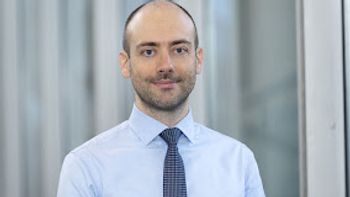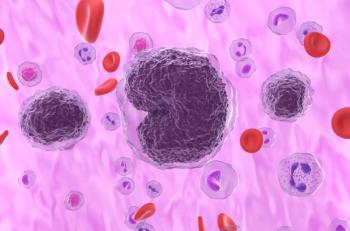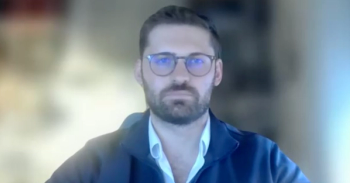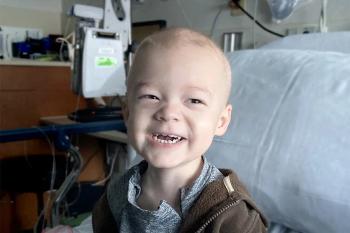
Looking at Respiratory Health Through a Global Lens at ERS 2025
The European Respiratory Society (ERS) Congress fosters collaboration among global experts, advancing respiratory health and promoting equality in medicine.
At this year’s
The many experts with whom AJMC spoke during the meeting explained why this large gathering is important to their professional goals and key advantages from attending each year.
This transcript was lightly edited for clarity; narrations and captions were auto-generated.
Transcript
Narration open: Imagine this. You've got thousands of the world's absolute leading experts on lungs all in one place. For days, they're just sharing data, debating brand-new ideas, and literally shaping the future of how we treat respiratory health. That's the European Respiratory Society Congress. But with so much going on, we really wanted to know, what makes a gathering like this so incredibly valuable. So we went straight to the source and asked the experts themselves.
According to the experts we talked to, this is so much more than just another conference. It's a place where ideas collide and create sparks, sparks that are already changing lives, and what they told us paints a really clear picture of where medicine is headed.
Christopher Carlin, MBChB, PhD: I love the ERS. I think it's one of the most valuable meetings on the calendar. It is very large, but it is also very friendly. There are excellent opportunities for networking. There is good science being presented. There are good updates from a clinical perspective or on the horizons perspective, and there are cross-cutting themes—digital transformation, patient engagement, importance of sustainability and climate, which speak to us all. The rich opportunities to present and check your own data, to hear what others are doing, to network and collaborate, is what makes the ERS meeting really essential.
Dries Cops, MSc: I think the most important part is connecting with new researchers that you haven't met before. I made good connections last year, and it's really nice to see them again. Then to further elaborate on your research and findings you had last year, and to make new connections and make potentially future collaborations with other international institutions, I think this is the main reason of ERS: to connect with other researchers within your field. For my part, COPD.
Pimpika Kaewsri, MSc: It's a good experience, a good opportunity to come and see where there's a lot of researchers and clinicians who have expertise in respiratory [health] so that I can get comments and insight on how it is going; for example, lifestyles or the environmental factors in relation to respiratory health. I think it will strengthen my work so that and I have a long list of sessions and presentations to attend.
Luca Menga, MD: I was very impressed by the organization and the number of different topics shown in the posters and also in the presentations. I think that the most striking and unique is the attention to the equality in medicine, in respiratory research, and also eco-sustainability, which is something that we still lack a lot. All of those 3, there is still a lot of work to do, and I'm very happy that ERS is moving in the right direction.
Justin M. Oldham, MS, PhD, MS: European Respiratory Society is one of the largest congresses in the world for respiratory medicine. This is where we get a good chance to interact with our European colleagues, disseminate knowledge, and some of the best science in the world is presented here along with the American Thoracic Society Conference. Twice a year, we get a chance to disseminate really important scientific findings, and this is one of them.
Lucilla Piccari, MD, PhD: This meeting is probably, for pulmonologists, one of the 2 or 3 fundamental meetings of the year. I would say, it’s one of the biggest. What we get is to meet as a community, and I think one of the biggest advantages is that I work in pulmonary hypertension, patient advocacy, and I get to meet with people who do things that are sort of parallel to my work and then maybe I don't get to meet usually in my pulmonary hypertension meetings. It allows cross contamination and collaboration, and really seeing what is being done in other disease states and in other groups, and I think we have a great synergy.
Natasha Smallwood, BMedSci, MBBS, MSc: I come to ERS every year for multiple reasons. Firstly, it's a great meeting where there's just so many people; 20,000 people come to this meeting. It's a huge meeting. There are great sessions. It's also got a really global feel, so you hear a lot of different perspectives. The session I was just speaking in, I was hearing from someone in Bangladesh and someone in Nepal, so it really gives you that global lens to health care, which can be quite empowering. Also, then when you feel like you're sitting in your clinic, whinging, you remember, actually, you're very lucky because you've got so much. It's a great meeting, it's a global perspective, there are fantastic sessions, and I guess again, for me as both an academic and a clinician, I get to connect with people I know from all around the world. That's why I come back.
Narration close: Let’s circle all the way back to that first question. What makes a meeting like this so valuable? The answer isn't in any one single presentation or study; it's in the connections. It's where the person developing a new drug learns from the data scientist, who learns from the palliative care doctor who learns from the environmental health expert. The real breakthrough is the incredible cross-pollination of all these different ideas. This is where true progress happens, in that messy, exciting, brilliant mix of thousands of ideas, and it leaves us with 1 final and pretty inspiring thought: with all of these fields, technology, compassion, global awareness, all coming together at once, just what will the next great leap in human health even look like?
Newsletter
Stay ahead of policy, cost, and value—subscribe to AJMC for expert insights at the intersection of clinical care and health economics.













































